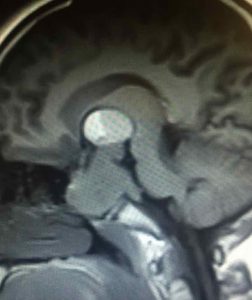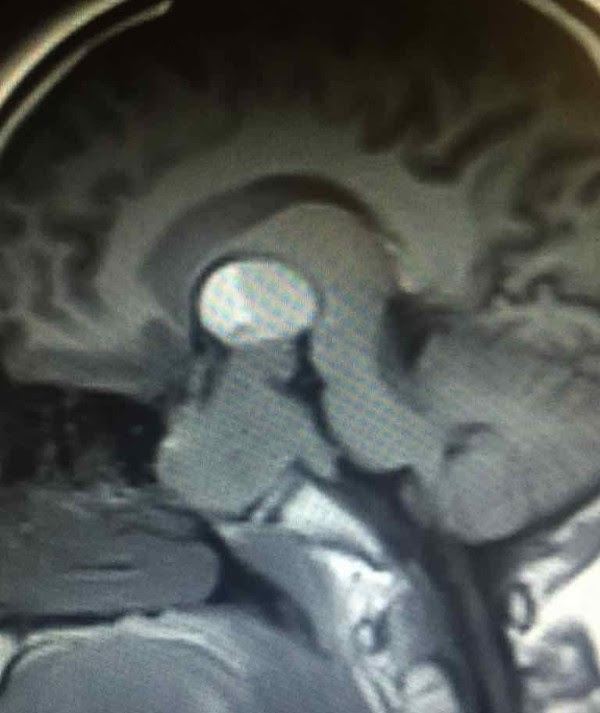Figure 1 Quiz of the Week
A 21-year-old female presents with a six-month history of irregular menses, decreased libido, impaired vision, and galactorrhea. An MRI is completed.

Image credit: @suzical31.
Answer: Dopamine agonist
This patient has clinical findings and imaging suggestive of macroprolactinoma, a benign adenoma of the pituitary gland that overproduces the hormone prolactin. Dopamine agonists such as cabergoline or bromocriptine are recommended as initial therapy to decrease the production of prolactin, reduce the size of the tumor, and eliminate associated symptoms. Serum prolactin concentration should be monitored and treatment may be adjusted accordingly over time. If the initial treatment is unsuccessful, surgery or radiation therapy may be considered.
Read more and join the discussion now at Figure 1!
Explore cases, quiz yourself, and solve medical mysteries along with thousands of other medical professionals around the world on Figure 1, the free app where doctors expand their clinical knowledge.

